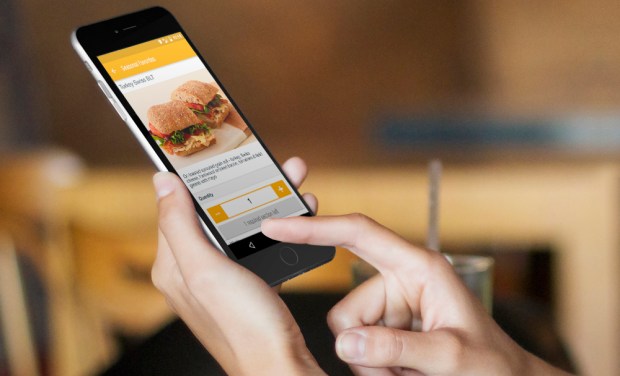Digital Ordering: Do It Right, Or Not At All

Digital ordering is a win for everybody. It’s easy for modern consumers, who would rather tap or click to order than talk to someone on the phone. It fuels better sales for restaurants, since customers often take advantage of digital customization options, driving higher ticket prices. Plus, it saves on labor costs.
Consumers don’t want to interact unnecessarily. Today, few travelers would go to an agent to book a flight – they’d just do it themselves online. Soon, ordering from restaurants will be the same way. Digital ordering won’t be ground-breaking or incredible. It’ll just be the new normal.
None of that is breaking news. The benefits are well known to those within the restaurant industry and to trend analysts. It would seem there’s no good reason for restaurateurs not to hop on the digital bandwagon and start reaping the rewards.
But slow down. Digital ordering is a tool, and like any tool, if you take the bargain route, it may not serve you very well. Buying a cheap secondhand car may seem like a smart compromise between having no wheels and buying a fancy, brand-new vehicle. That is, until it breaks down on the side of the highway, makes you late for work, and starts racking up repair and maintenance costs.
“It’s not enough to offer digital ordering,” said Patrick Eldon, CEO of the SaaS digital ordering provider orderTalk. “If you’re not going to do it well, it’s actually better not to offer it. You need a clearly thought-through strategy.”
Consumers, said Eldon, have little patience for friction-heavy digital experiences. They’ll happily try a restaurant’s new online or mobile ordering platform, but it’s a one-strike inning: if it fails them, they won’t bother again, and in many cases, they’ll turn to a competitor with a smoother ordering experience before they’ll pick up a phone and call the first restaurant to place an order. And next time, they’ll head straight to that competitor without even trying to order from the first place.
“There’s nothing worse than a customer getting hangry at you because their order never showed up,” Eldon said. “They’re going to blame not just the technology, but your restaurant.”
Restaurateurs are learning this – some the easy way, and some the hard way. As they do, orderTalk has needed to grow to meet demand. The company just tripled the size of its Flower Mound, Texas, headquarters and added new employees to its development and executive teams.
But it hasn’t always been like that. When orderTalk was founded in 1998, most people didn’t think that digital ordering would ever get this big. The company was built on the belief that, if Amazon could do it for books, why couldn’t they do it for food?
It was harder than it sounded. Ordering dinner wasn’t like ordering a book. There are combo meals, and customers want to customize their food and sandwiches down to the ingredient level.
The learning curve was steep, but today, online ordering is just a part of life. Millennials have grown up with the technology; they expect and even demand it. But it’s not just kids these days. Older generations have now had enough time to acclimate to the new way of doing things. Eldon said his elderly mother now does her grocery shopping online. This is the world today.
Eldon doesn’t think innovation is slowing down, either. He believes the next step will be incorporating delivery for casual dining chains that don’t traditionally focus resources on that service. Non-traditional ordering methods, like voice ordering with Alexa or Google Home, will increase in prevalence, and restaurants will deploy IoT solutions, including artificial intelligence to handle incoming calls that were once fielded by live employees.
The forward charge doesn’t mean the death of the website, though. Eldon said that having a strong website will continue to be important for a while to come. Even if many individuals are ready to shift to mobile apps and voice ordering, some will always prefer the larger screen. Plus, desktop ordering just makes more sense in certain scenarios, like corporate luncheons, where the customer is already sitting at a computer when he decides to place the order.
Players like GrubHub and Facebook don’t have the clout to overtake restaurant websites for digital ordering, Eldon said, because people placing orders on those platforms aren’t customers of the brand; they’re customers of the platform.
Going forward, he said, restaurants will need to own their own brand presence and market directly to their customer base to drive repeat business. Otherwise, the next time the customer opens the GrubHub app, they’ll just migrate to whatever competitor has paid the most to be ranked higher.
